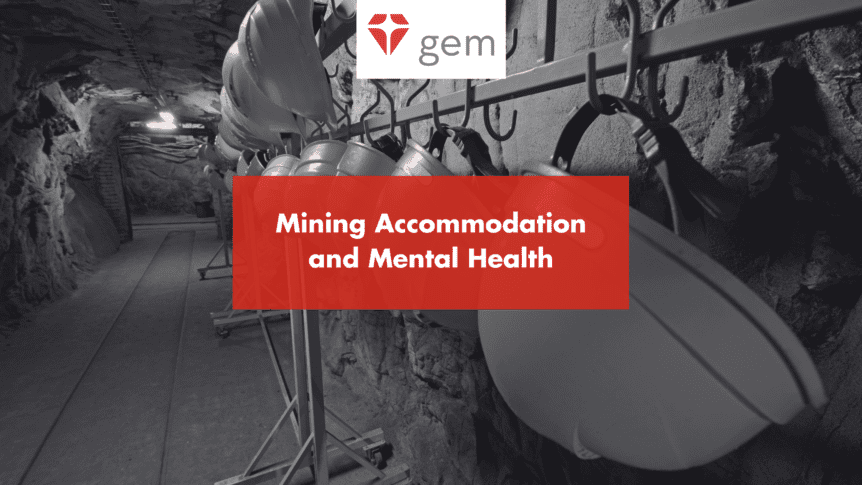
Mining Accommodation and Mental Health
Trigger Warning: This article, and pages it links to, contains information about suicide.
Heavy industrial equipment, remote operations in demountable buildings, open pits, and fly-in-fly-out (FIFO) workers are common characteristics of the mining industry. Despite strict health and safety precautions, working on a mine can still pose physical risks to the individuals on site. While physical safety is a major priority, so too is the mental health of workers. This article will discuss how the development of more sophisticated mining accommodation can positively contribute to the mental well-being of miners.
Men employed in the construction industry as a whole are particularly vulnerable to suicide. From 2001 to 2018, 3621 male construction workers in Australia, including miners, died by suicide. Whether it be work-place stressors, including job insecurity and working away from family and support, or the influence of stoicism (enduring hardship without complaint) as a barrier to seeking help, these factors can contribute to mental distress.
Suicide prevention is incredibly challenging, but it is an issue that must be addressed; raising awareness, gathering data and providing support are just some of the strategies that can be implemented. MATES in Construction is one example of a charitable organisation that works to reduce the level of suicide among Australian construction workers through community development programs on sites, supporting workers through case management and a 24/7 help line. One of their branches, MATES in Mining, provides training and support to individuals specifically in the mining industry.
In addition to general awareness training and developing effective and direct communication, the accommodation of mining workers has been an increasing point of focus when it comes to mental health. Working in a remote area can make individuals feel disconnected from their home life or normal social patterns. As such, designing mining accommodation that mimics “normal” community-based facilities can promote social interaction and a sense of connection.
The evolution of the mining “donga” has seen the introduction of infrastructure that promotes social and recreational activities, supporting the emotional well-being of miners. What once might have looked like portable sheds, accommodation facilities are now becoming more sophisticated resort-style dwellings. An early example of housing for miners that GEM has reported on, the 2005 Hail Creek Mine Accommodation Village, featured demountable single rooms and a swimming pool. A more contemporary project, the estimated AU$153 million expansion of the accommodation camp at BHP’s Mining Area C in Western Australia, saw the construction of squash courts, a golf centre and a three-storey wet mess café for its workers.
Fostering social interactions and a sense of community can encourage opportunities for workers to communicate with each other and reach out when they are struggling. From television and cinema screens and seating, artificial grass, gym and sporting equipment to kitchen and bathroom hardware, lighting, cladding, paint and more, a wide variety of product suppliers and manufacturers have increasing opportunities to get involved in mining projects.
While accommodation villages can help create a home away from home for miners, conversations about and awareness of the mental well-being of workers in the mining industry must continue.
If you or anyone you know needs help, call the MATES Helpline on 1300 642 111, or find a helpline local to your country at https://findahelpline.com/i/iasp.

